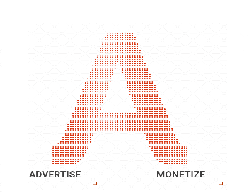Day 17: IFRS 9 – Financial Instruments (Part 1)
International Financial Reporting Standard (IFRS) 9 is a standard that deals with the recognition, measurement, and disclosure of financial instruments. It replaces the earlier standard, IAS 39, and provides a more comprehensive and principles-based approach to accounting for financial instruments.
Classification and Measurement of Financial Assets
IFRS 9 requires financial assets to be classified into three categories: amortized cost, fair value through other comprehensive income (FVOCI), and fair value through profit or loss (FVPL). The classification of a financial asset depends on the business model of the entity and the contractual cash flow characteristics of the asset.
- Amortized Cost: A financial asset is classified as amortized cost if it is held within a business model whose objective is to hold the asset for the collection of contractual cash flows, and the contractual cash flows are solely payments of principal and interest.
- FVOCI: A financial asset is classified as FVOCI if it is held within a business model whose objective is to hold the asset for the collection of contractual cash flows and the sale of the asset, and the contractual cash flows are solely payments of principal and interest.
- FVPL: A financial asset is classified as FVPL if it is not classified as amortized cost or FVOCI.
Recognition and Measurement
IFRS 9 requires financial assets to be recognized and measured at fair value on initial recognition. The fair value of a financial asset is the price that would be received in an orderly transaction between market participants at the measurement date.
After initial recognition, financial assets are measured at amortized cost, FVOCI, or FVPL, depending on their classification. Amortized cost financial assets are measured at their amortized cost, which is the initial recognition amount minus any impairment losses. FVOCI financial assets are measured at their fair value, with any changes in fair value recognized in other comprehensive income. FVPL financial assets are also measured at their fair value, with any changes in fair value recognized in profit or loss.
Impairment of Financial Assets
IFRS 9 introduces a new approach to impairment of financial assets, which is based on the concept of expected credit losses (ECLs). The ECL model requires entities to recognize an impairment loss for the expected credit losses of a financial asset over its entire life, rather than just the incurred losses.
The ECL model is applied to all financial assets that are not classified as FVPL. The impairment loss is recognized in profit or loss, and it is measured as the difference between the asset’s carrying amount and its recoverable amount.
Disclosure Requirements
IFRS 9 requires entities to disclose information about their financial instruments, including their classification, measurement, and impairment. The disclosure requirements are designed to provide users of financial statements with a clear understanding of an entity’s financial instruments and the risks associated with them.
Business Model Assessment
The business model assessment is a critical component of IFRS 9. It requires entities to assess their business model for managing financial assets, which includes their held-to-maturity, available-for-sale, and loans and receivables portfolios. The business model assessment helps entities to determine the appropriate classification and measurement of their financial assets.
Contractual Cash Flow Characteristics
The contractual cash flow characteristics of a financial asset are also an important factor in determining its classification and measurement. IFRS 9 requires entities to assess the contractual cash flow characteristics of their financial assets, which includes the payment terms, interest rates, and repayment schedules.
IFRS 9 requires entities to measure their financial assets at fair value, which is the price that would be received in an orderly transaction between market participants at the measurement date. The fair value measurement is a critical component of IFRS 9, as it provides users of financial statements with a clear understanding of the value of an entity’s financial assets.
Hedge Accounting
IFRS 9 also introduces a new approach to hedge accounting, which is designed to provide a more principles-based approach to accounting for hedging transactions. The hedge accounting requirements of IFRS 9 are designed to provide users of financial statements with a clear understanding of an entity’s hedging activities and the risks associated with them.
Transitioning to IFRS 9
The transition to IFRS 9 requires entities to reassess their financial assets and liabilities, and to apply the new classification and measurement requirements. The transition also requires entities to disclose information about their transition to IFRS 9, including the impact of the new standard on their financial statements.
Conclusion
IFRS 9 provides a comprehensive framework for financial instrument recognition, measurement, and disclosure. It introduces a new approach to classification and measurement of financial assets and a more principles-based approach to accounting for financial instruments. The standard also introduces a new approach to impairment of financial assets, based on the concept of expected credit losses.
By following the requirements of IFRS 9, entities can provide users of financial statements with a clear and transparent picture of their financial instruments and the risks associated with them.
Previous Post IAS 12 Income Taxes
Next Post IFRS 9 Financial Instruments Part 2
Bookkeeping Services @ ONE WEB ONE HUB: 
Keep your financial records accurate and up-to-date with our expert bookkeeping services. Our team of experienced accountants will help you manage your finances, prepare financial statements, and ensure compliance with regulatory requirements. Contact us at mtfco@onewebonehub.com to learn more about our bookkeeping services.












